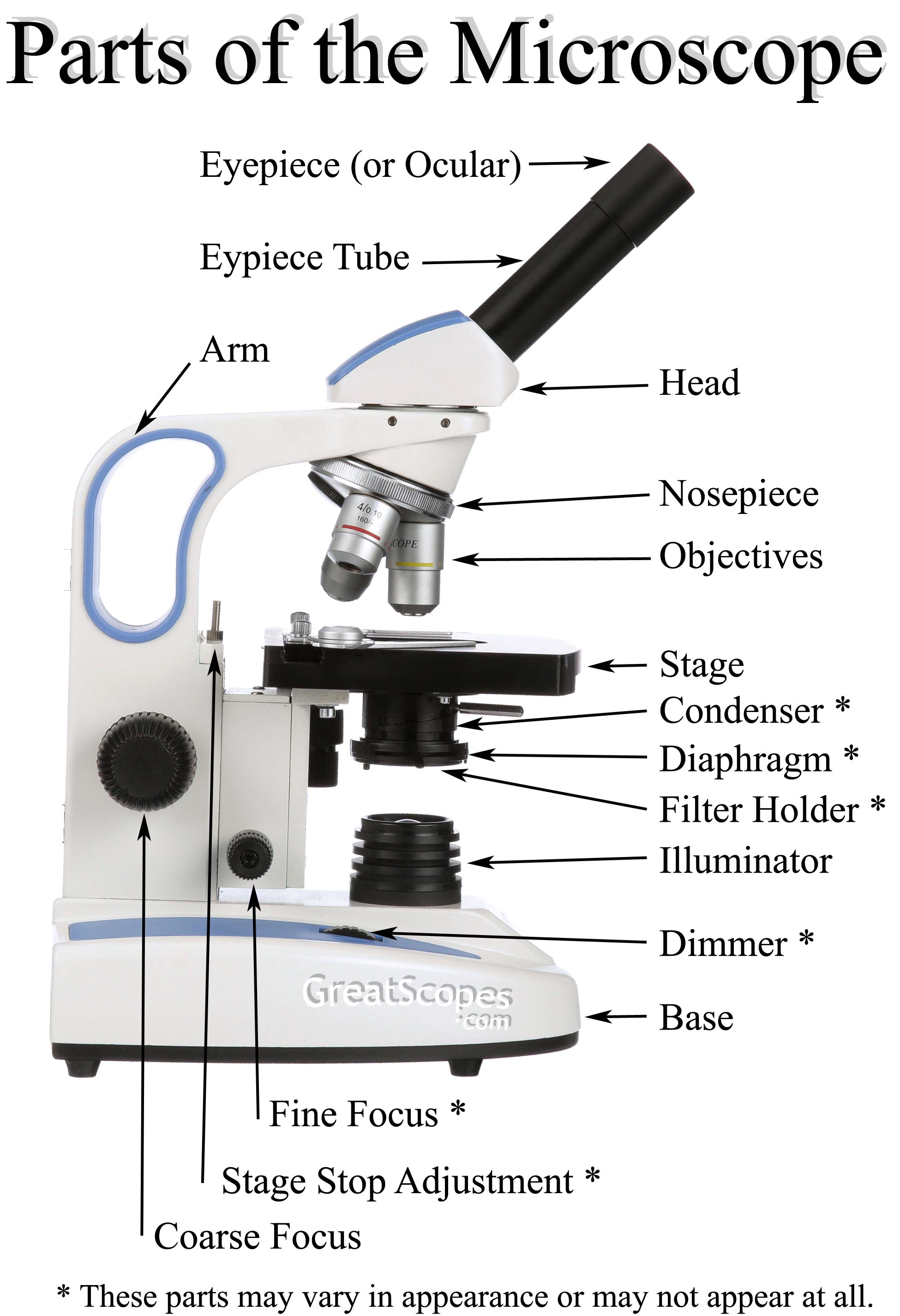Glossary

These definitions are intended for the layperson. If you need more technical definitions, please check with your local library or a bookstore for a good book on microscopes. Abbe Condenser: A simple device that condenses and focuses the light coming from the light source. The user can adjust a movable Abbe Condenser, whereas one that is not movable has a fixed focus. A condenser is most important at 1000x. Binocular: Having two eyepieces. All stereomicroscopes and some compound microscopes are binocular. Since each person is different, our binocular scopes allow for interpupillary adjustment (eye spacing). Diaphragm: A simple device between the light source and the stage that is used to vary the aperture to refine the stream of light that passes through the subject. DIN Objective: DIN (Deutsche Industrie Normen) represents an international standard for microscope objectives. This standard specifies the exact threading and focal length, and insures compatibility with lenses from any microscope manufacturer in the world. Our microscopes with DIN lenses assure you that your scope will not be obsoleted several years down the road by an accidentally broken lens. Eyepiece: The lens closest to the eye when looking through a microscope or stereomicroscope. The eyepiece is also called the ocular. Mechanical Stage: A device which is mounted on or part of the microscope stage, and by means of two knobs allows precise movement and positioning of the slide. A mechanical stage is most valuable at 400x or higher where precise movement is most critical. Objective: The lower lenses, closest to the specimen. The objectives are fitted into the nosepiece, and most scopes have more than one. On stereomicroscopes, there is a matched pair of objectives (ie, you are looking through two eyepieces, and two objectives), whereas on a compound microscope there is a just single objective in use at any time (regardless of the number of eyepieces). Ocular: Another term for the eyepiece. Oil Immersion: A lens that requires a drop of special oil on the subject for use. The oil is put on the cover slip, and the objective is actually lowered into the oil. Oil Immersion lenses are sealed so as to not be damaged by the oil. A non-oil immersion lens should never be lowered into immersion oil. Once you get into very high magnification, about 1000x and beyond, you start fighting a battle with the characteristics of light. Light travels in waves, and when you magnify something 1000 times there are fewer of those waves passing through the subject and into the lenses (enabling you to see). Immersion oil allows you to control and actually "bend" more of that light into the lens so that you can see. Without the oil, you would not be able to focus on the image. Most of our Student Microscopes are available with Oil Immersion lenses and all of our Professional and Medical microscopes are. Immersion oil is included with each. Parcentered: A microscope that is “parcentered” is one in which the object in the center of view will remain in the center when the objective is rotated. Parfocal: A microscope that is “parfocal” is one which, if it is in focus with one objective, when the objective is rotated, will remain (mostly) in focus. Stereo Microscope: A stereo microscope is one which provides a magnified, three-dimensional view of a visible object. It has two eyepieces (binocular) as well as two objectives. Since you are looking all the way through the scope using two complete sets of lenses, your eyes are able to see the subject three dimensionally. A stereomicroscope is best used for close up examination of objects which can be seen with the naked eye, such as stamps, coins,insects, rocks, etc. You would not normally look at slides with a stereomicroscope. Subject: That which is being examined under a microscope or stereomicroscope. Total Magnification: Determined by multiplying the power of the eyepiece (ocular) by the power of the objective lens. For example, when viewing a subject through a standard 10x eyepiece and a 40x objective, the subject is being viewed at 400x or "400 power".
Check out our informative e-book: How to buy the Right Microscope